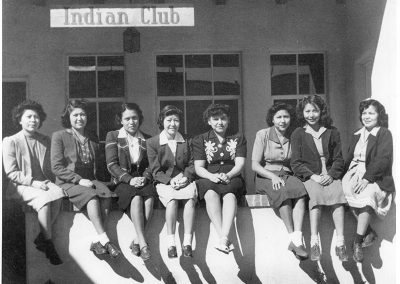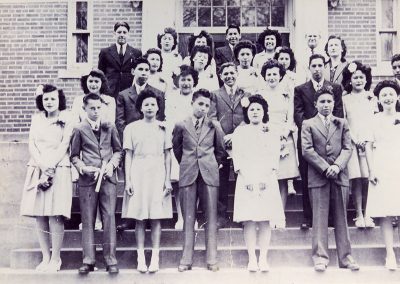
Reforms and Changes
Early Reformers

Carlos Montezuma/Wassaja

Luther Standing Bear/Ota Kte

Susan La Flesche Picotte

Charles Eastman/Ohiyesa

Gertrude Simmons Bonnin/Zitkala-Sa
-Meriam Report, 1928
Federal Reforms: The Meriam Report
Read the full report via the National Indian Law Library website.



Reforms in the Arts
Art and music programs changed with implementation of reforms. Art classes frequently allowed production of traditional arts as part of the Native Industries Curriculum. In the 1930s and 1940s, production of art at U.S. Indian Schools to meet market demands was a goal for self-sufficiency. Classes ranged from lace-making, beading commercially produced objects and wheel-thrown pottery. Sales rooms or trading posts at schools were exemplified by Wa-Pai-Shone Trading Post from Stewart Indian School in Carson City, Nevada.
Student Publications
Many of the larger American Indian boarding schools, such as Carlisle, Hampton, Phoenix, Chilocco and Haskell, had print shops, some spanning a century, 1880s to 1980. The shops printed publications for many federal agencies as well as the school newspaper and publications.
The student newspaper was a place for Native students to create an identity as a printer, writer or editor. Although the content of the student newspapers was very controlled, former students liked keeping in touch with the school through subscriptions.
Starting in the late 1930s into the 1940s Indian School presses printed cultural and bilingual material, reflecting reforms in the presentation of Native heritage and languages.


Boarding Schools Today
Changing political and cultural trends brought about more reforms. The rise of Native activism and involvement in education by tribal nations in the 1960s and 1970s resulted in a peak enrollment of 60,000 in 1973. The passage of the Indian Self-Determination and Education Assistance Act of 1975 emphasized decentralization of students from distant boarding schools to local schools. Many of the federal boarding schools closed in the 1980s.
Today, there are four off-reservation boarding schools run by the Bureau of Indian Education (BIE). These schools are supported by Native communities. In fact, some students come from families who have attended the same boarding school for generations.
Over the decades, Native Americans have forged an intense and meaningful relationship with the boarding school system. The students took what was given them and made something better of it. The boarding schools that survived into the 20th century changed substantially. New policies encouraged schools to celebrate Native heritage, with more emphasis on American Indian art, culture, language and history.
“[Boarding schools] were started to stamp out the Indian from the Indian, you know, make us all into white people, and you know, it didn’t work. Actually … it was the exact opposite: it made us stronger as Indian People. It made us more aware of and more proud of who we were.”
-Ruthe Blalock Jones (Delaware/Shawnee/Peoria)
Leading the Way in Self-Determination
For more than a century, American Indian responses to boarding schools moved from resistance or tolerance, to a love for, participation in, and desire for control of the schools. Indian children feared, hated, endured and loved the schools. Boarding school experiences were as varied as the students themselves.
As more Native people rose to control the schools by the 1970s and 1980s, a gradual change occurred, fostering, in a limited way, students’ cultural knowledge and Native identity. Education was the front line for Native self-determination.
Wa-Pai-Shone Trading Post, 1936, at Stewart Indian School. Stewart Indian School Cultural Center and Museum, Carson City, Nevada

Santa Fe Indian School
Santa Fe Indian School, established by the federal government in 1890 under the assimilation policy mantle, became the first school to be contracted by an Indian organization—the All Indian Pueblo Council (AIPC)—under the Indian Self-Determination and Education Assistance Act of 1975. The AIPC, a governmental body comprising the nineteen Pueblos of New Mexico (and later, Texas), eventually obtained complete control of the school and curriculum, including ownership of the land. The AIPC achieved educational sovereignty of Santa Fe Indian School.
In the early 2000s, the AIPC began demolition and renovation of the school. The rebuilding encompassed the entire campus as a community learning place and boarding school. The new architectural design was developed with consultation from tribal members, students and architects, including Santa Clara Pueblo architect Rina Swentzell. The Pueblo-style architecture dominates all structures. Pathways and windows across campus capture views of surrounding sacred mountains. The dormitories have prayer or meditation spaces and circular fireplaces. The renovated school is a learning environment designed to support students in their cultural, educational and traditional values.


